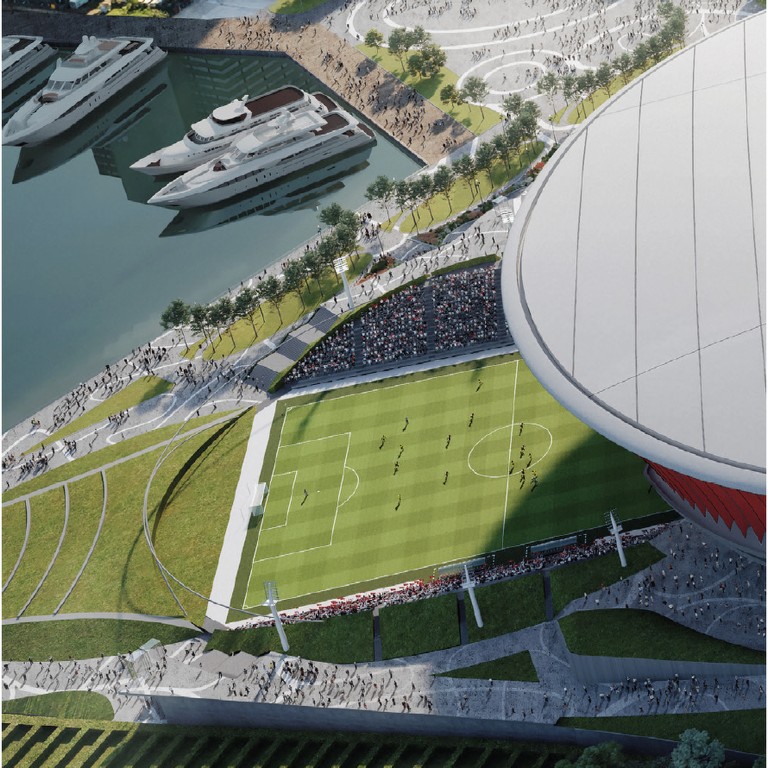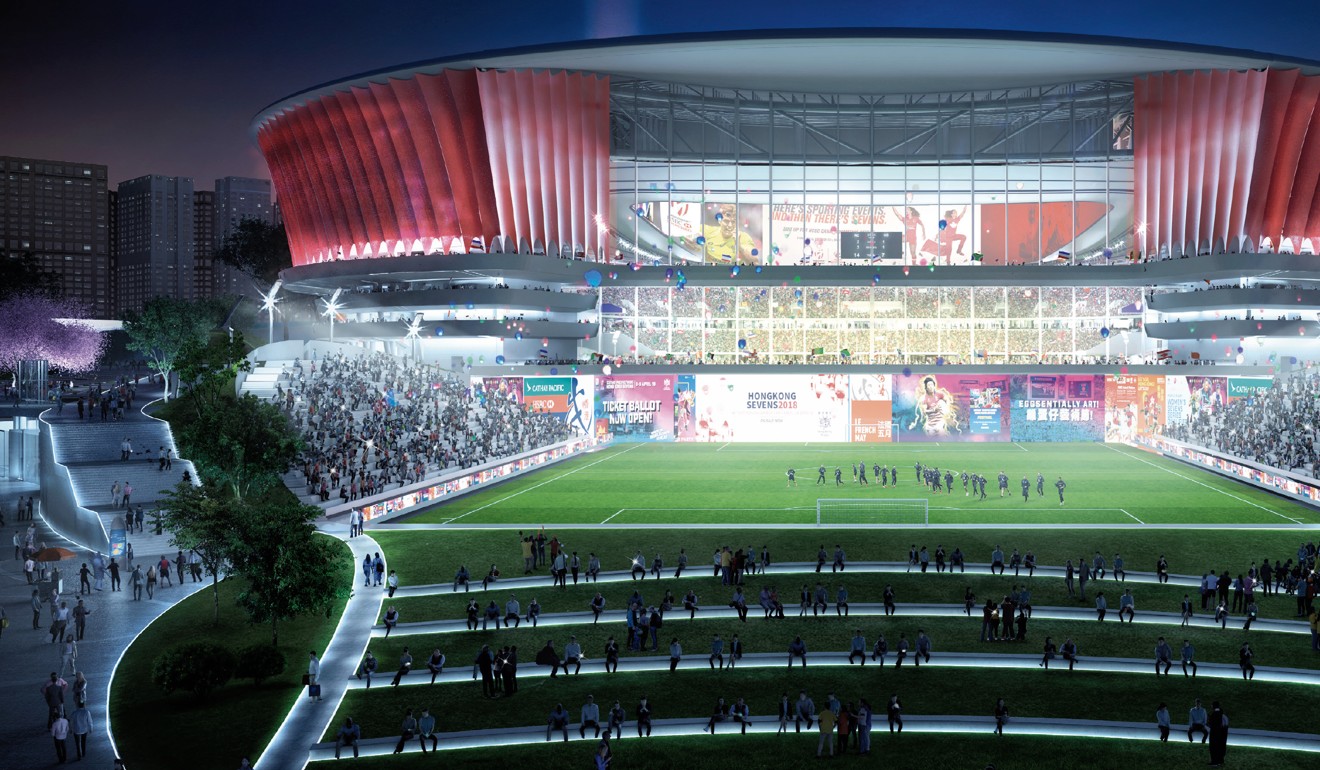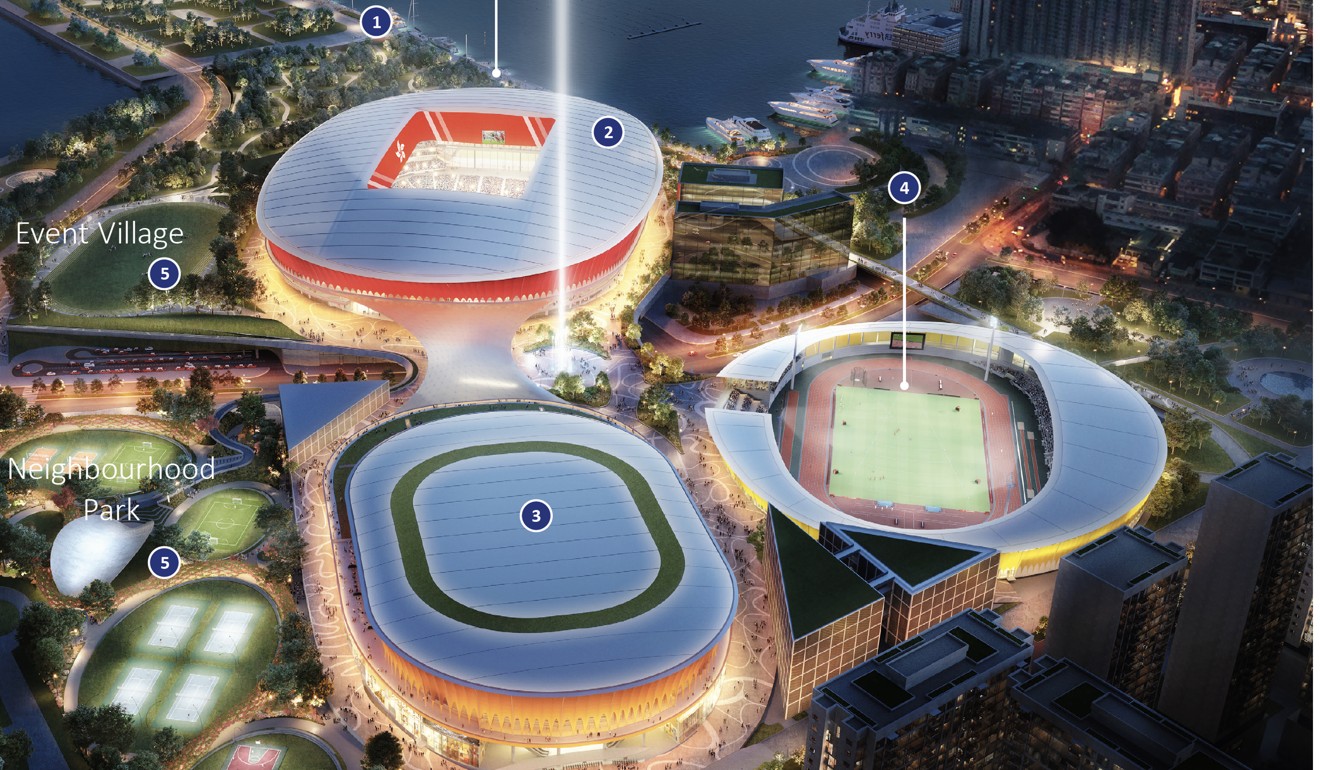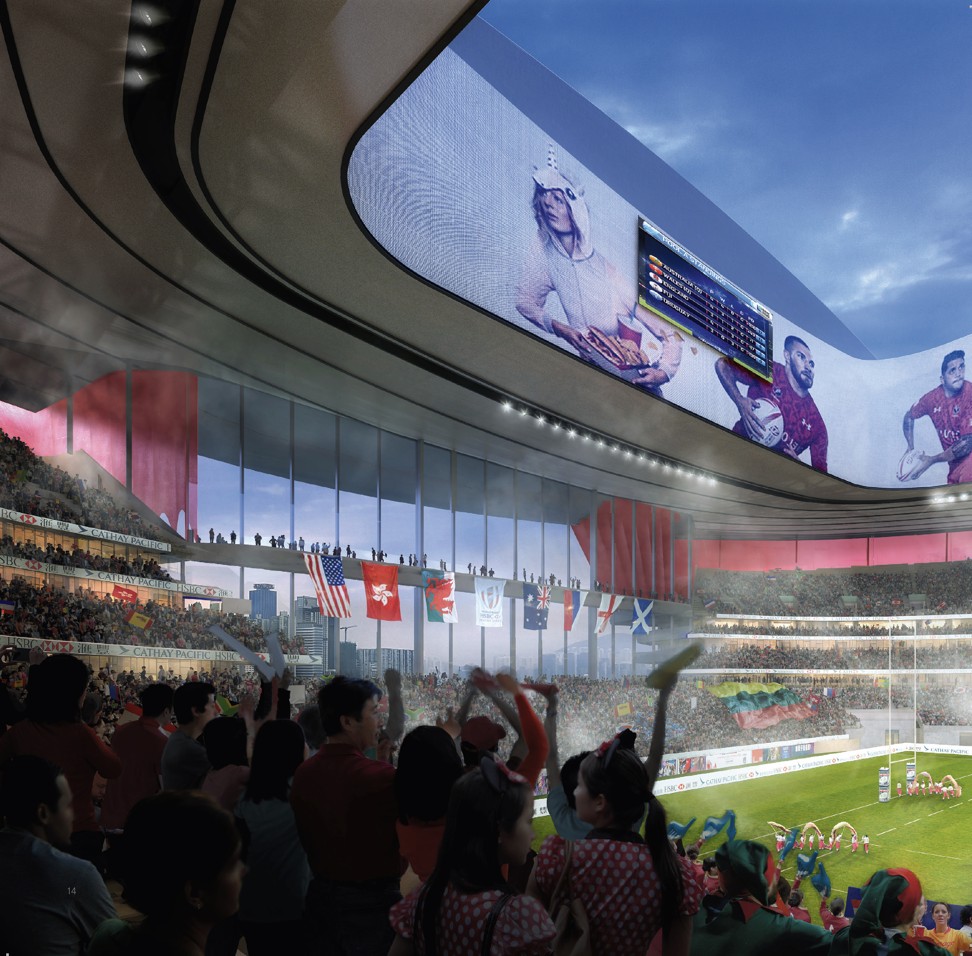
A retractable pitch flowing into a harbour amphitheatre – here’s the Kai Tak Sports Park design you will never see
- Losing tender for the HK$30 billion project designed a main stadium with a sliding grass pitch to form another arena outside on the waterfront
- Not even Sebastian Coe could win over the government with their promise to set a new standard for sporting excellence at all levels
The consortium led by Guangzhou R&F Properties is reluctant to go public with what Hongkongers will be missing out on, but the design was built around a grass pitch that would slide out from the main stadium and create an amphitheatre for sports and entertainment on Hong Kong’s iconic harbourfront.
The consortium admitted it took a risk with its design but believed it delivered a sustainable park that would serve the interests of sport, entertainment and local communities.
Despite having heavy hitters such as 2012 London Olympics chief Sebastian Coe and architects Foster & Partners on their team, they came late to the party after other consortiums lost interest and felt they needed to do something different to chase down front-runners New World Development.
Athletics great Coe said in bid documents seen by the Post that the Kai Tak Sports Park represents a once-in-a-lifetime chance to set a new standard for sporting excellence in Hong Kong at all levels from schoolchildren and communities to elite professional sports.
“From my experiences with Queen Elizabeth Olympic Park in London, I know that Kai Tak Sports Park needs to be more than just new facilities if it is to be successful: Hong Kong’s people must take the park into their hearts and make it come alive,” Coe said.

Their vision would have been a sight to behold and enjoy, namely the harbour amphitheatre. When not needed inside the main stadium, the grass pitch slides outside in an area seating up to 5,000 fans, providing a new outdoor venue for natural turf sports, community sports and entertainment events.
The main stadium, a 50,000-seat bowl, incorporates a large glazed façade offering spectators views of the harbour and Hong Kong Island, with the unique movable pitch allowing it to accommodate community sports when not hosting major events. It is the “beating heart” of the park.
According to the bid document, the rest of the park featured:
A 10,000-seat indoor sports centre: Facility which can easily and quickly switch between being a community sports facility and a top-class events venue.
Public sports ground: An open-air venue for athletics, football, and rugby, hosting up to 5,000 spectators for local and international competitions on an IAAF standard track and infield.
Neighbourhood Park Event Village and Dining Cove: Shops, restaurants, and cafes are dispersed across the park to encourage visitors to explore. A variety of sports courts provide new facilities for Hongkongers to practise and grow elite athletes of tomorrow.

Coe and Guangzhou R&F bid leader Michael Lee stressed the people of Hong Kong were the foundation of their approach, meeting more than 50 National Sport Associations to understand what they wanted and needed from new facilities.
They said they ran workshops and interviews with ordinary people to get a real feel for the ambitions and desires of Hong Kong’s amateur and professional sportspeople.
“We have created extra space for the community at every opportunity: more courts in the neighbourhood park; flexible facilities in the event village for day-to-day community use,” the blueprint said, highlighting they could offer about four times the number of hours available to community sports as laid out in the government’s Reference Design.

Lee would not reveal how much they had spent on the project, but conceded it was more than the HK$60 million the government set as a ceiling for a cashback refund to entice bidders to stay in the game.
“We were willing to put our skin in the game in terms of subsidies, and providing commercial benefits to associations” and “willing to back the project for the life of the contract,” Lee said.

He said they only had about eight months to get the design, build and operate (DBO) model together.
“I can’t say we fully worked out all the issues. We were definitely taking a risk [with the stadium]. We had to fix the design in the first three months, as we only had about 6-8 months. This is a HK$30 billion project and every drawing and every box had to be ticked.”
Sadly, we won’t see it.

